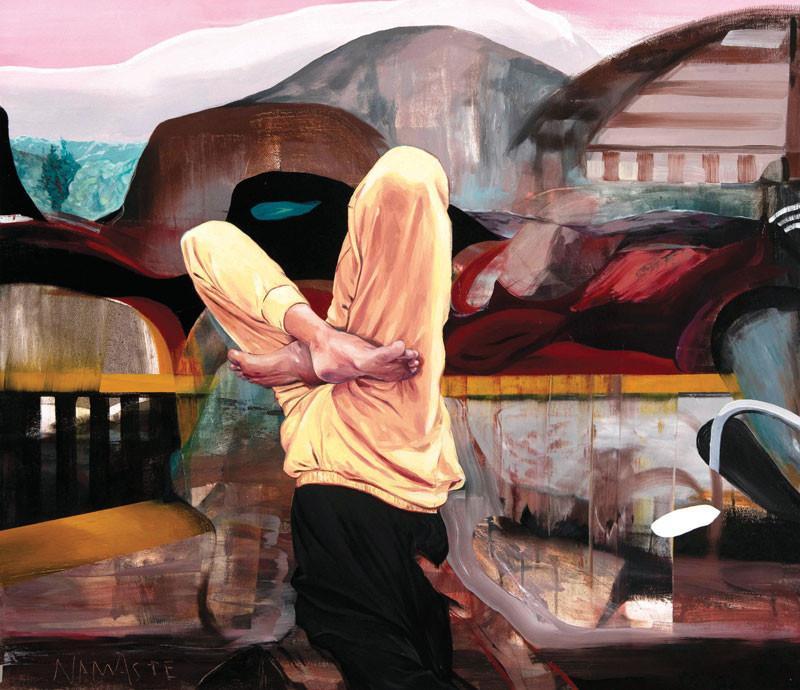
All of the Istanbul-based Turkish artist Sabo’s works have utilized the power of memories, symbols that come within them and past experiences. The paintings in “Paracetamol,” his first solo exhibition at Versus Art Project, show the artist’s ability to open new dimensions in looking into the past. He questions his memories, as he shows viewers if it is possible to interpret what we already knew in the past.
The paintings of Sabo deal with his past. As the artist puts himself in the middle of his creative process, he shows us his memories, the novels that inspired him and the people and events that affected him. In short, the audience sees how his reason for existence becomes the main subject in this exhibition. There may be something of a combination. Then in his paintings, we see his life becomes a whole. He tells us about his family, friends, and his approach to art, his own life and mainly the reasons for his creative process.
“There are two different periods of my creative process. One is the creative artist and his surroundings, and the other is what inspires me the most. In this case, I deal with literary works from Albert Camus, Ernest Hemingway, and J.D Salinger.”
As the gallery space’s rooms open one to another, the viewer sees different works from different times and themes.
Sabo’s work, called “Paracetamol,” is proof of how he manages to use different subjects with different images.
“I keep a notebook for my sketches, but these are not necessarily sketches. Sometimes an image can self-express themselves with words. In that case, I use these words on my paintings.”
“Paracetamol” is a small-scale painting, with a blurry face of a man with the writing “PARACETAMOL.”
“The main idea of the exhibition comes from this painting,” said Sabo, adding that the man in the painting is the founder of the drug Paracetamol, which had caused him dizziness when he was very young. “So, that is a memory I never forget.”
Sabo’s creative process gets deep with all the paintings. In one of his paintings, titled “Shame on You,” the artist defines both friendship and how the values and nature disappear in time. The louder the metaphors in the paintings, the more the viewer becomes a part of Sabo’s life and enters his sphere of influence.
Revealing the creative process
The storyline of the exhibition is distinctive. The artist tries to tell about his own life, and the storyline he creates fits very well the situation. His fears, good and bad memories gather as an essential asset in these paintings.
The creative process and seeing it in the paintings are essential components of this solo exhibition. The compositions, Sabo made using his dreams, memories and influences take the audience to another level of awareness. As a result, the unconscious mind is always there and awake. The sketchbooks of Sabo are also an essential point of this unconscious mind.
The imaginary world is an essential component for Sabo’s paintings. “The imaginary world leads to the creative process. There are images, and I collect them and make them a part of my paintings,” he said.
The oil compositions reveal reality but also expose fictional aspects. This makes the viewer think that paintings float like ideas in the gallery room. All together they become whole and offer a new world to the audience.